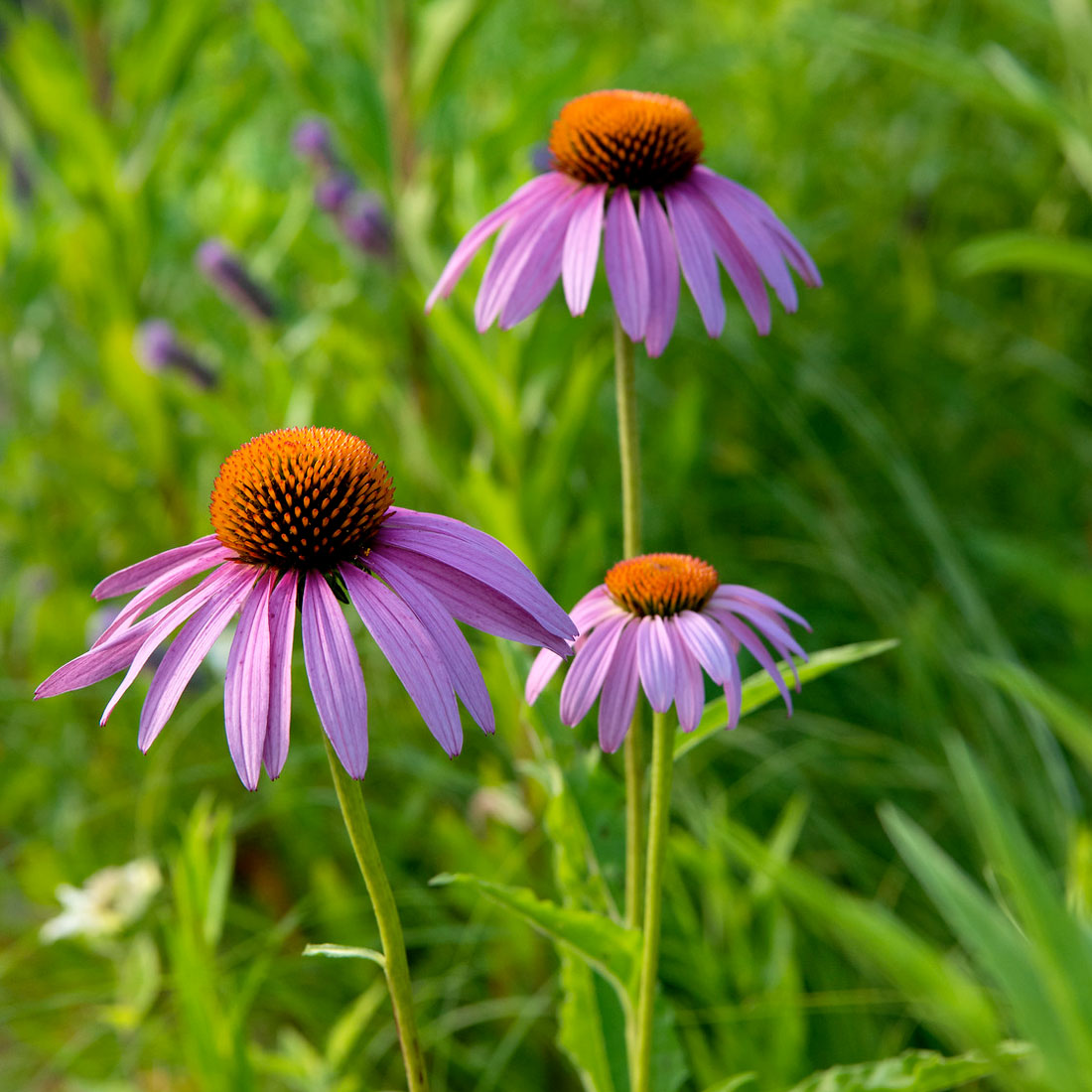

Tips & Techniques
Maintaining a Perennial Garden
Is there such a thing as a low-maintenance perennial garden? The answer is yes if careful consideration is first given to plant choice and plant location. Matching the requirements of a plant to the characteristics of the site takes some planning, but will save hours of work in the garden.
Match the Plant to the Site
If you garden in a shady but dry spot and plant astilbe, you'll need to water constantly, and that's high maintenance. But if you plant astilbe in a shady, moist spot, you'll have to water much less and that's low maintenance. Moreover, if you group plants with similar cultural requirements together, you'll simplify the care of your garden, and greatly increase the chances that all of your plants will thrive. With astilbe in your moist, shady bed, consider planting ligularia, rodgersia or goatsbeard — all moisture-loving plants that like similar conditions.
Some plants are aggressive spreaders, and a low-maintenance gardener may be well advised to stay away from them. But, you can use those same spreading tendencies to your advantage. Gooseneck loosestrife (not to be mistaken for purple loosestrife, an invasive plant) is a beautiful but rampant spreader that will quickly overwhelm a mixed perennial border. But in a contained, backyard bed where you want a massed look, it's perfect. Even coneflower spreads aggressively in a mixed border and must be kept in check by weeding out the volunteer seedlings. In an open, dry, sunny spot you want to fill in, it becomes a great choice. Know your site and know your plant. In some situations, aggressiveness can be used to your advantage; in others it can be a big problem.
Work the Soil
After you have carefully chosen and properly sited your perennials, what are the next steps to ensure low maintenance? Some gardeners feel that soil should be the focus. If you put your energy into good soil, your plants will do well, with better results year after year; no time-consuming fertilizing or deadheading required!
Spread a 3-inch layer of compost over the garden soil (not the crowns of the plants) every year about mid-May, after the bulbs have bloomed and the perennials have emerged. Use shredded leaf or mushroom compost, and avoid the heavier bark products that take too long to decompose. Work the compost into the ground, either cultivating it into the existing soil or adding it when you plant in the spring. By working that layer of compost into the soil, you eliminate the need for fertilizer that often pushes a plant to produce weak foliar growth. Many perennials are not heavy feeders. What you want to promote is a strong root system. Some gardeners prefer to add the compost in the fall, after the perennials have been cut down and the ground is frozen. This protects plants over winter and improves the soil as it breaks down.
Staking
Put supports in place before plants need them, and let the plants grow through them. In addition to the usual cages and wires, ornamental branches pruned from trees and shrubs during the winter can be used to prop up perennials. Use strong, structural companion plants to lend support to floppier plants — turtlehead or asters planted behind peonies for example.
Dividing
Whether you are moving or dividing a plant, dig a large root ball and give the plant lots of water in its new home. It's best not to move a perennial when it's in flower or when it's extremely hot. But it's better to move a plant that's not doing well than to leave it due to fear of transplanting. Leave enough room between plants so that dividing and transplanting does not become an annual chore but one you might tackle every three years.
Pinch and Cut Back
Late-bloomers, like asters, chrysanthemums, sedums, and boltonia, can be pinched back weekly until mid-July to encourage a fuller, nonflopping shape. Early bloomers, like campanula, lamb's ears, catmint, and mountain bluet, can be sheared almost to the ground to force a second bloom and create a neater plant.
The Naturalistic Look
This is a matter of preference. If you want the garden to look pristine, you have to deadhead and groom weekly. If you want a looser, more naturalistic look, you don't have to do it at all. Choose your plants accordingly. Some plants, like astilbe, coneflower, black-eyed Susan and certainly all the ornamental grasses are attractive with the spent flowers and foliage remaining year-round.
A garden journal that contains photographs, plant locations, bloom times, problems and the dates they occur can be a good tool. It will encourage close attention to the plants, the seasons and the cyclical nature of gardening. This will benefit the gardener as well as the garden.







